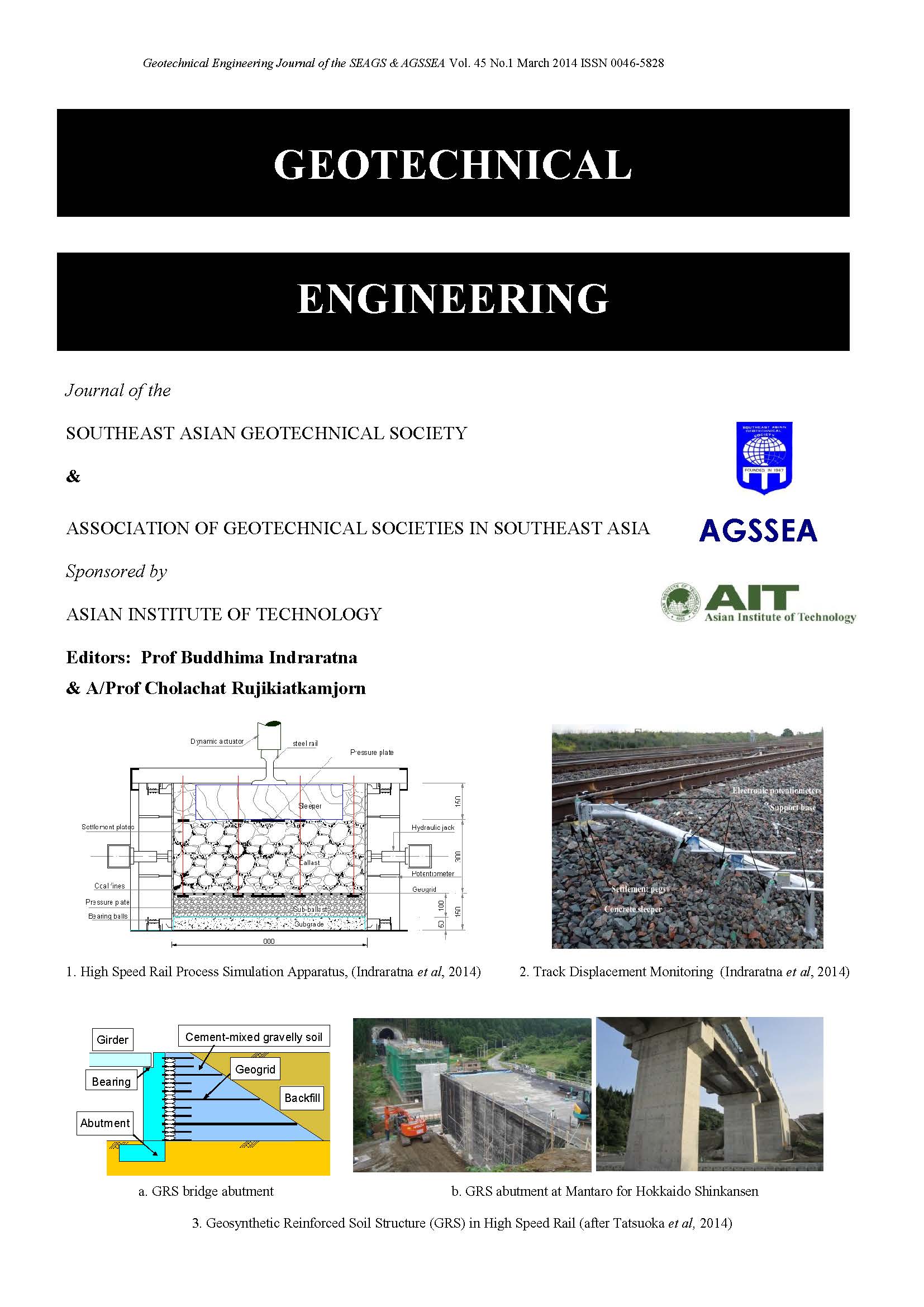Enhancement of Rail Track Performance through Utilisation of Geosynthetic Inclusions
Main Article Content
Abstract
In coastal regions of Australia, high population density and increased traffic volumes have led to rapid expansion of rail transport. Use of artificial inclusions such as polymeric geosynthetics for enhanced soil-structure interaction and rubber shock mats for absorbing energy with the aim of reducing particle breakage is described in this paper as a cost-effective option. This paper highlights the results of a laboratory study on the deformation of coal fouled ballast stabilised with geogrids, at various degrees of fouling. A novel Track Process Simulation Apparatus (TPSA) was employed to reproduce realistic rail track conditions under cyclic loading, and the Void contaminant index (VCI) was used to assess the level of ballast fouling. The beneficial aspects of the geogrid inclusion are discussed in the paper. Laboratory results showed that biaxial geogrids can reduce the deformation of fresh ballast, but their effectiveness diminishes with an increase of VCI. A threshold value of VCI was proposed in view of track maintenance. Comprehensive field trials were executed on two fullscale rail tracks in the towns of Bulli and Singleton in New South Wales. These trials facilitated the evaluation of the relative performance of different types of geogrids, geocomposites and shock mats installed in fully instrumented track sections. Field trials showed that the use of recycled ballasted in rail tracks was a feasible and effective alternative. The performance of geogrids and geocomposite was found to be associated with their geometrical and mechanical properties as well as with the type of subgrade. The distributions of vertical and lateral stresses in the track were also assessed. In addition, effects of magnitude of axle load and train speed on stress distributions were studied.
Article Details

This work is licensed under a Creative Commons Attribution-NonCommercial-NoDerivatives 4.0 International License.
Copyright © 2019 Association of Geotechnical Societies in Southeast Asia (AGSSEA) - Southeast Asian Geotechnical Society (SEAGS).


